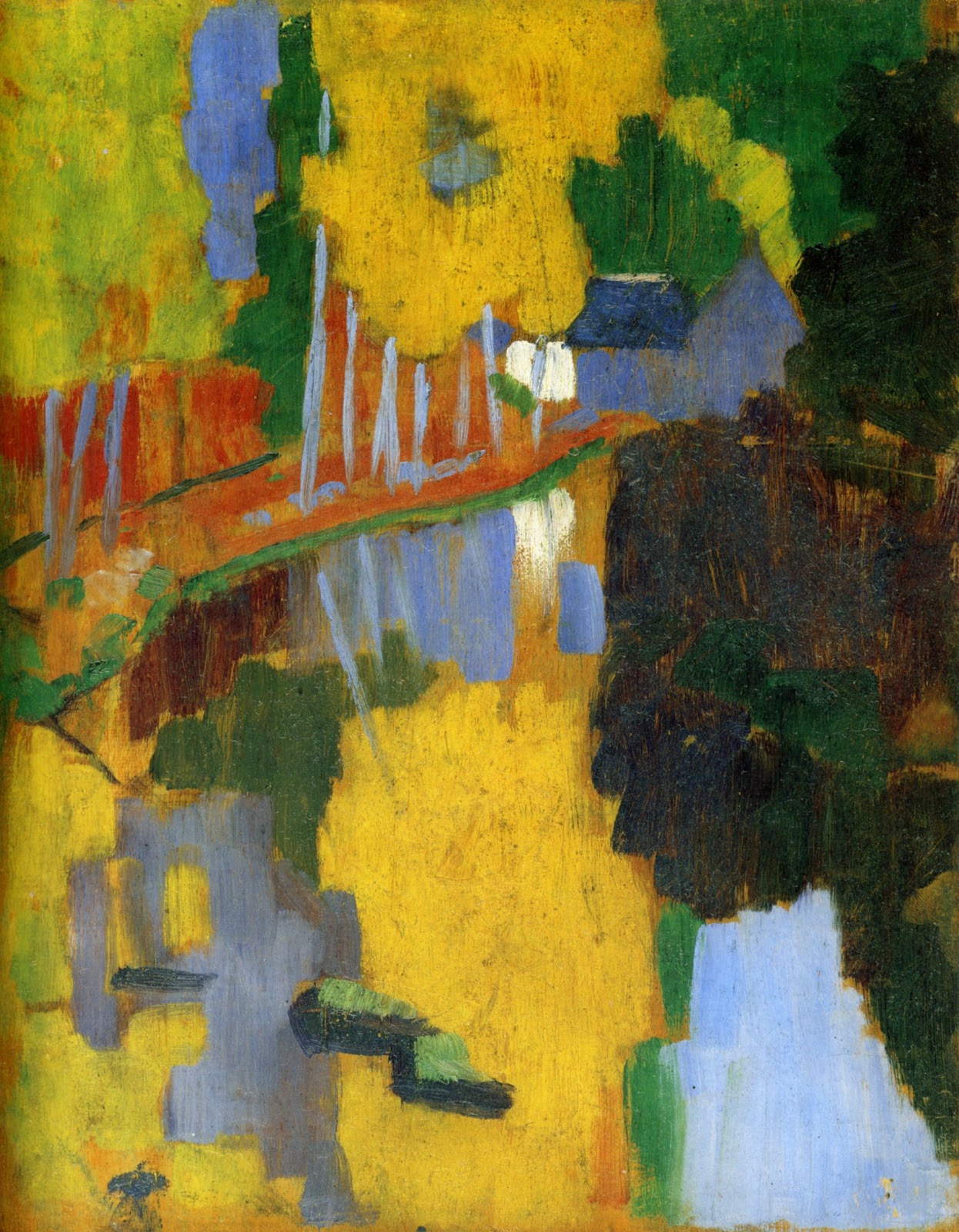Ambitious decorative painting enjoyed a resurgence in Europe from the late 1880s through the early twentieth century.
In Paris, Pierre Bonnard🎨, Maurice Denis🎨 and Édouard Vuillard🎨 were among the most influential artists to embrace decoration as painting’s primary function.
Their works celebrate pattern and ornament, challenge the boundaries that divide fine arts from crafts, and, in many cases, complement the interiors for which they were commissioned.
Disaffected with the rigidly representational painting methods taught at the Académie Julian, Bonnard and Denis joined with other like-minded students in the fall of 1888 to form a brotherhood called the “Nabis”, a Hebrew word meaning “prophets”.
The group was spearheaded by Paul Sérusier🎨, who had visited Paul Gauguin in Pont-Aven over the summer and was now spreading an aesthetic message based on his interpretation of Gauguin🎨’s Symbolism.
Paul Sérusier - The Bois d'Amour à Pont-Aven / The Talisman (Le Talisman), 1888, Musée d'Orsay, Paris



















